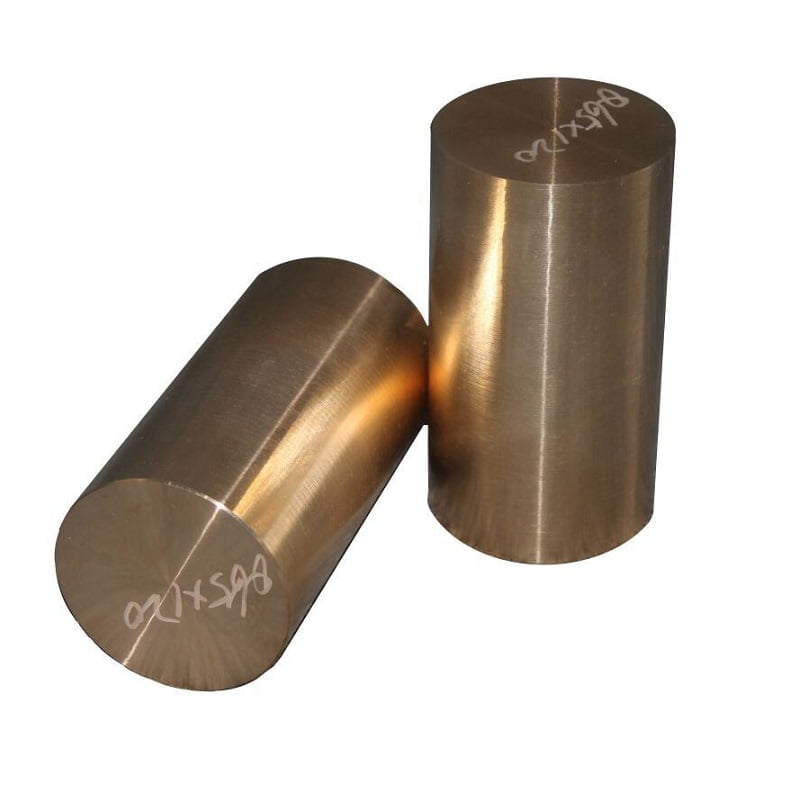
導入
C17510 と C17200 は両方とも ベリリウム銅合金, known for their excellent combination of high strength, conductivity, and corrosion resistance. These alloys are widely used in various industries, including aerospace, automotive, electronics, and oil & gas. While they share some similarities, they also have distinct characteristics that make them suitable for different applications.
化学組成
これらの合金の化学組成は、その特性と性能を決定する上で重要な役割を果たします。
| 要素 | C17510 (重量%) | C17200 (重量%) |
|---|---|---|
| 銅 | 98.1~99.5 | 96.5 – 98.1 |
| ベリリウム | 0.2 – 0.6 | 1.8~2.0 |
| コバルト+ニッケル | 0.2 – 1.4 | 0.2 – 0.6 |
| 鉄 | 0.1 – 0.4 | 最大0.2 |
| アルミニウム | – | 最大0.2 |
| ケイ素 | – | 最大0.2 |
| その他 | 最大0.5 | 最大0.5 |
組成の主な違いはベリリウムの含有量で、C17200 の方が大幅に高くなります。この違いは合金のさまざまな特性に影響します。
機械的性質
機械的特性は、これらの合金が特定の用途に適しているかどうかを判断するために重要です。
| 財産 | C17510 | C17200 |
|---|---|---|
| 引張強さ(MPa) | 655 – 795 | 1140 – 1310 |
| 降伏強さ(MPa) | 520 – 725 | 965 – 1140 |
| 伸長 (%) | 10~20 | 3~10 |
| 硬度(HRB) | 90~100 | 97 – 105 |
| 弾性率 (GPa) | 131 | 131 |
一般に C17200 はより高い強度と硬度を示しますが、C17510 はより優れた延性 (伸び) を示します。
物理的特性
物理的特性は、熱伝導性と電気伝導性が関係する用途にとって重要です。
| 財産 | C17510 | C17200 |
|---|---|---|
| 密度 (g/cm3) | 8.83 | 8.25 |
| 電気伝導率 (%IACS) | 45 – 65 | 22~28日 |
| 熱伝導率(W/m・K) | 208 – 300 | 105 – 130 |
| 熱膨張係数(μm/m・℃) | 17.8 | 17.0 |
| 融解範囲 (°C) | 870 – 980 | 870 – 980 |
C17510 は、C17200 と比較して優れた電気伝導性と熱伝導性を示します。
熱処理
どちらの合金も熱処理によって強化できますが、プロセスと結果は異なります。
| 側面 | C17510 | C17200 |
|---|---|---|
| 溶体化処理 | 900~925℃ | 760~780℃ |
| 老化温度 | 460~480℃ | 315~345℃ |
| エージングタイム | 2~3時間 | 2~3時間 |
| 強度の増加 | 適度 | 重要な |
C17200 は通常、ベリリウム含有量が高いため、熱処理によって強度が大幅に向上します。
耐食性
どちらの合金も優れた耐食性を示しますが、いくつかの違いがあります。
| 環境 | C17510 | C17200 |
|---|---|---|
| 大気 | 素晴らしい | 素晴らしい |
| 海水 | とても良い | とても良い |
| 酸 | 良い | 良い |
| アルカリ | 良い | 良い |
| 耐応力腐食割れ性 | 素晴らしい | とても良い |
C17510 は、ベリリウム含有量が低いため、応力腐食割れ耐性においてわずかに優れている可能性があります。
製造上の特徴
これらの合金の製造特性は、製造プロセスにとって重要です。
| 特性 | C17510 | C17200 |
|---|---|---|
| 被削性 | 良い | 良い |
| 成形性 | とても良い | 良い |
| 溶接性 | 良い | 公平 |
| 熱間加工 | 良い | 良い |
| 冷間加工 | 素晴らしい | とても良い |
C17510 は、ベリリウム含有量が低く、延性が高いため、一般に優れた成形性と溶接性を備えています。
アプリケーション
各合金の独自の特性により、さまざまな用途に適しています。
C17510 アプリケーション:
- 電気コネクタ
- 高性能スプリング
- 抵抗溶接用電極
- ヒートシンク
- 集積回路リードフレーム
- ベアリングとブッシュ
- 非火花工具
C17200 アプリケーション:
- 高強度スプリング
- ダイヤフラム
- ベローズ
- 精密機器
- プラスチック射出成形用金型
- 腐食環境におけるベアリング
- 外科用および歯科用器具
コストに関する考慮事項
これらの合金の価格は、市場の状況や入手可能性によって異なります。
| 要素 | C17510 | C17200 |
|---|---|---|
| 原材料費 | より低い | より高い |
| 処理コスト | 適度 | 中程度から高程度 |
| 総経費 | より低い | より高い |
C17200 はベリリウム含有量が高いため、一般的により高価です。
環境と安全への配慮
どちらの合金にもベリリウムが含まれているため、慎重な取り扱いが必要です。
| 側面 | C17510 | C17200 |
|---|---|---|
| ベリリウム含有量 | 低め (0.2 ~ 0.6%) | より高い (1.8 – 2.0%) |
| 粉塵の危険性 | 適度 | より高い |
| PPE の要件 | 標準 | 強化された |
| リサイクル | より簡単に | より複雑な |
C17510 はベリリウム含有量が低いため、取り扱いやリサイクルが若干容易になります。
比較の概要
| 特性 | C17510 | C17200 |
|---|---|---|
| 強さ | 良い | 素晴らしい |
| 導電率 | 素晴らしい | 良い |
| 延性 | とても良い | 良い |
| 耐食性 | 素晴らしい | 素晴らしい |
| 加工性 | とても良い | 良い |
| 料金 | より低い | より高い |
| 安全上の考慮事項 | 適度 | より高い |
結論
C17510 と C17200 は両方とも、強度、導電性、耐食性の優れた組み合わせを備えた高性能銅ベリリウム合金です。どちらを選択するかは、アプリケーションの特定の要件によって異なります。
- 次の場合に C17510 を選択してください。
- より高い電気伝導率と熱伝導率が必要
- より優れた成形性と溶接性が必要
- コストは重要な要素です
- 安全上の理由からベリリウム含有量は低い方が好ましい
- 次の場合には C17200 を選択してください。
- 最大の強度と硬度が重要です
- アプリケーションはより低い導電率を許容できる
- パフォーマンス要件によってコストが高くても正当化される
これらの合金の類似点と相違点を理解することで、エンジニアや設計者は情報に基づいた意思決定を行うことができ、アプリケーションでの最適なパフォーマンスと費用対効果を確保できます。
